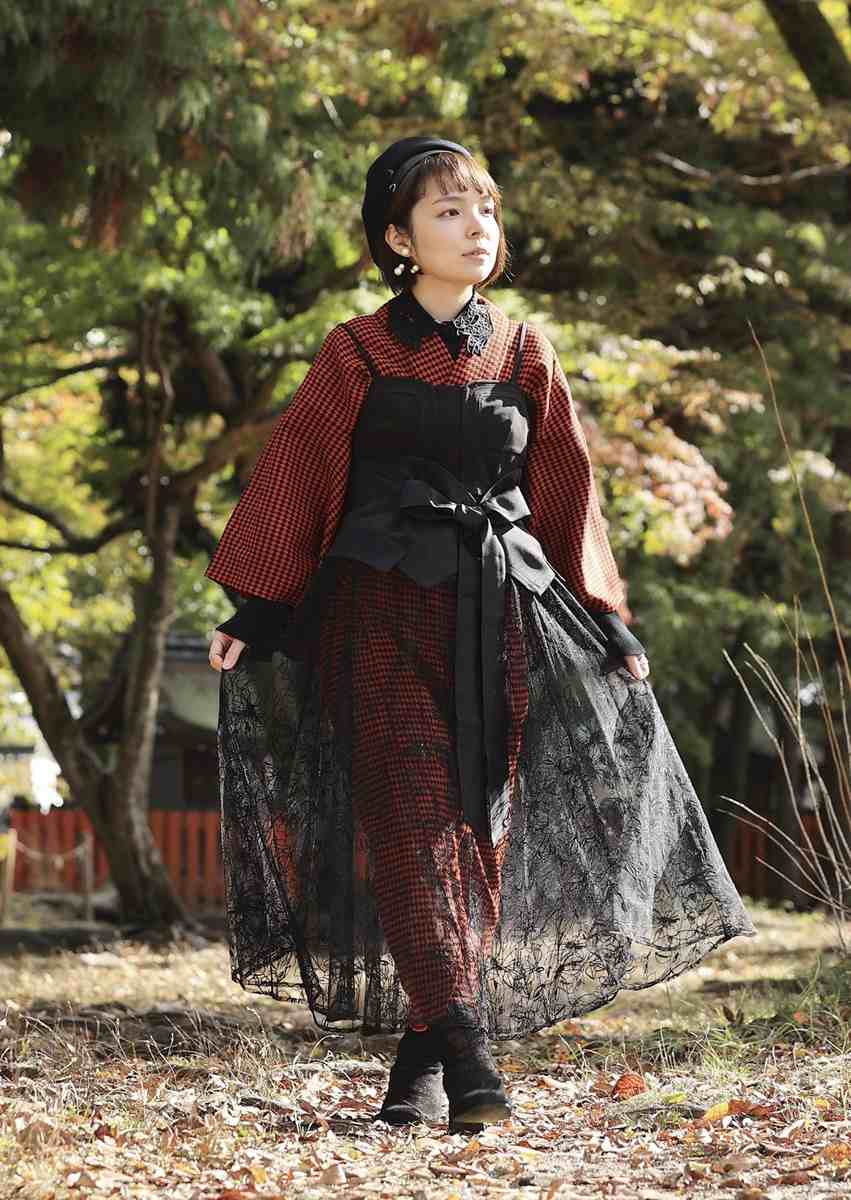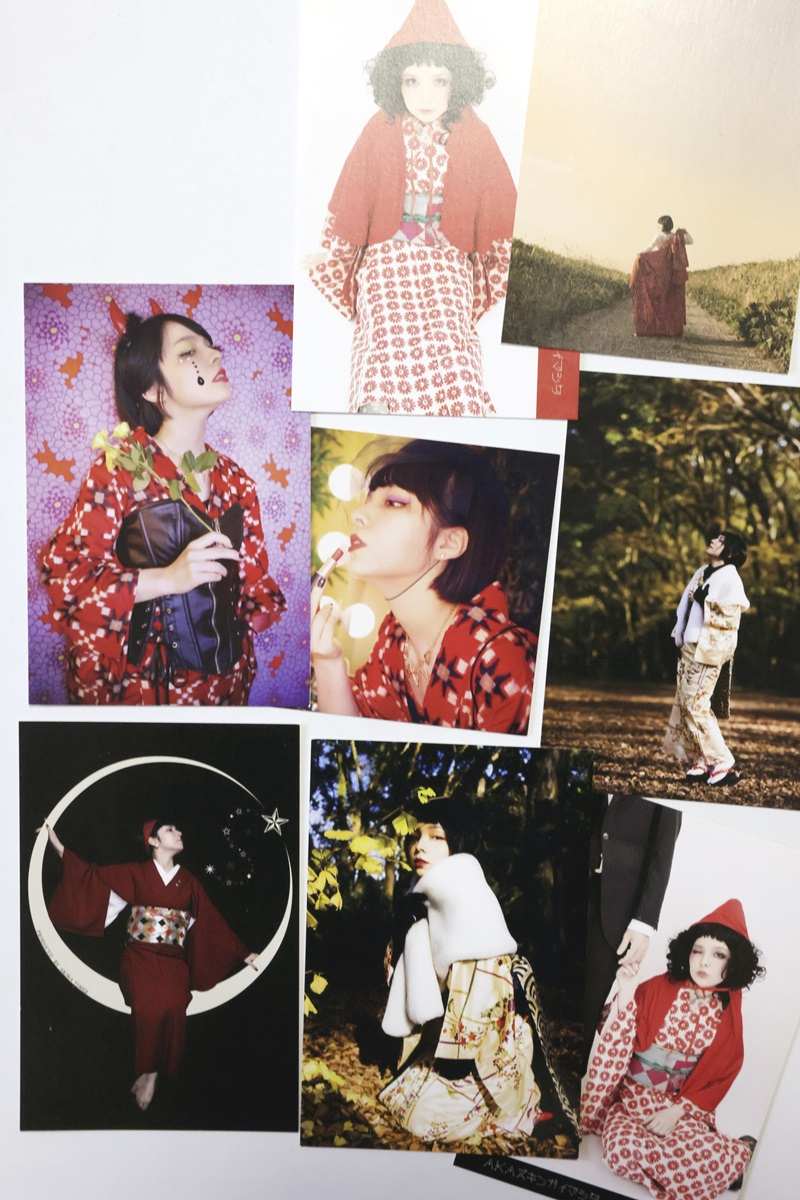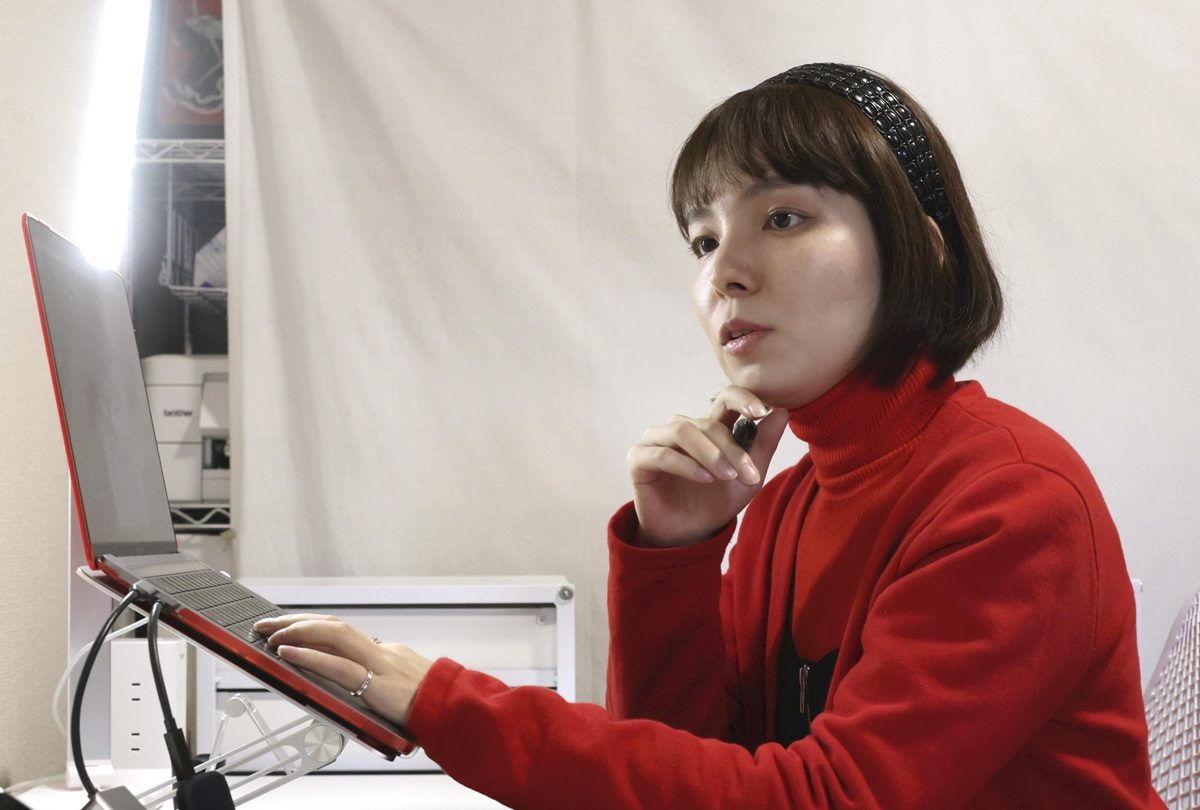
Maria Kawahara at Kamigamo Shrine in Kita Ward, Kyoto

11:35 JST, January 13, 2024
KYOTO — Kimono designer Maria Kawahara believes that kimono can be worn more freely, like with a belt if one doesn’t have an obi, or even with boots or high heels instead of zori sandals.
The style of kimono that the Kyoto-based designer advocates shakes up the way people think about kimono. She blends both Japanese and Western styles as well as the present and the past in a playful way, which she calls “the kimono style of the Reiwa era.” The Reiwa era started in 2019.
Kawahara thinks that Kyoto is a broad-minded city. At first, she got strange looks because of her kimono style, but she gradually received more and more compliments, with some saying, “It’s cute.” Someone even gave her an expensive kimono.
Inspired by Kawahara, who has more than 100,000 followers on social media, young people can now be found in Reiwa-style kimono, smartphone in hand as they walk in the neighborhood around Kiyomizu Temple, a major sightseeing spot in Kyoto.
Within the long history of kimono, the current dressing rules were established after World War II. Until the early 20th century, for instance, wearing a kimono with a skirt was popular in Japan.
“The more you know about kimono, the more freedom you will find. I want to expand the scope of kimono in order to make it an everyday garment again,” Kawahara said.
Boosted by social media
Kawahara was born in Nagasaki, the youngest of six siblings. Her ancestors on her mother’s side were “hidden Christians,” those who hid their faith during the 17th to 19th centuries when Christianity was prohibited in Japan. In fact, Kawahara was named after the Virgin Mary.
At the age of 12, Kawahara enrolled in a school that trained girls to become nuns and could go out only a few hours each month. As she spent her youth isolated from the outside world, a vague hope formed in her mind of wanting to somehow express herself.
Kawahara entered the workforce at the age of 18. As she moved from job to job, she wondered what kind of homegrown design Japan could show with pride to the world and landed on kimono. And when she thought of kimono, Kyoto came to mind.
Feeling as if she had hit on an idea, Kawahara searched online using the keywords Kyoto, kimono and apprentice. In the back of her mind as well was a memory of her late father, who was a designer, praising her on his sickbed for wearing a kimono during the New Year’s holidays.

Kawahara proposes avant-garde kimono styles as a model.
Soon after, she became an apprentice to a Kyoto-based designer. She was 23 at the time.
Kawahara benefited from the rapid spread of social media. She began receiving design and modeling jobs after posting her own way of wearing kimono on social media. She launched her own kimono brand and successfully ran a pop-up shop in the Harajuku district of Tokyo.
In 2019, she became an independent kimono designer and expanded her activities to include illustrator and art director for events.
Kawahara has thus become a sort of kimono evangelist.
Behind the glamour
In contrast with the glamorous image of her job, Kawahara’s work as a kimono pattern designer is full of steady procedures. The way she moves her pen in an elaborate manner on the computer screen is like that of an animator. Her patterns range from seasonal plants she found in Kyoto to designs that have been handed down in shrines and temples.
She focuses on the details of the kimono patterns down to the millimeter, keeping in mind how it will turn out in the end.
Today, less than 1% of the population wear kimono daily, and many kimono designers are in their 70s and 80s. The design job may be replaced by artificial intelligence someday.

Kawahara works on designing kimono patterns on her computer.
But Kawahara said she will not give up on kimono. She seems convinced that kimono and its traditional patterns are a form of beauty to be proud of in the world. “That’s because they are the identity of the Japanese,” she said.
Kawahara values the principle of “shu-ha-ri,” — “learn tradition,” “break through it” and “move beyond it” — a term used in tea ceremony and martial arts. The principle she cherishes reflects the very spirit that lives on in Kyoto.
“I will create tradition with the wisdom of our predecessors and the contemporary ideas. I want to sow the seeds for that here.”
***
If you are interested in the original Japanese version of this story, click here.
"Features" POPULAR ARTICLE
-

Sanrio to Open Museum in Yamanashi Pref. Dedicated to Founder, Exhibits Include Hello Kitty, Other Characters
-

Autumn Foliage Surrounds Visitors to Tokyo’s Showa Kinen Park
-

My Daughter No Longer Speaks to Me, But I Want to See Her and My Grandchild
-

Kumamoto: Public Bath Refurbished as Library Where You Can Chat, Take Photos
-

Frozen Vegetables: Demand Rises for Convenient, Tasty Domestic Produce
JN ACCESS RANKING
-

Keidanren Chairman Yoshinobu Tsutsui Visits Kashiwazaki-Kariwa Nuclear Power Plant; Inspects New Emergency Safety System
-

Tokyo Economic Security Forum to Hold Inaugural Meeting Amid Tense Global Environment
-

Imports of Rare Earths from China Facing Delays, May Be Caused by Deterioration of Japan-China Relations
-

University of Tokyo Professor Discusses Japanese Economic Security in Interview Ahead of Forum
-

Japan Pulls out of Vietnam Nuclear Project, Complicating Hanoi’s Power Plans

























